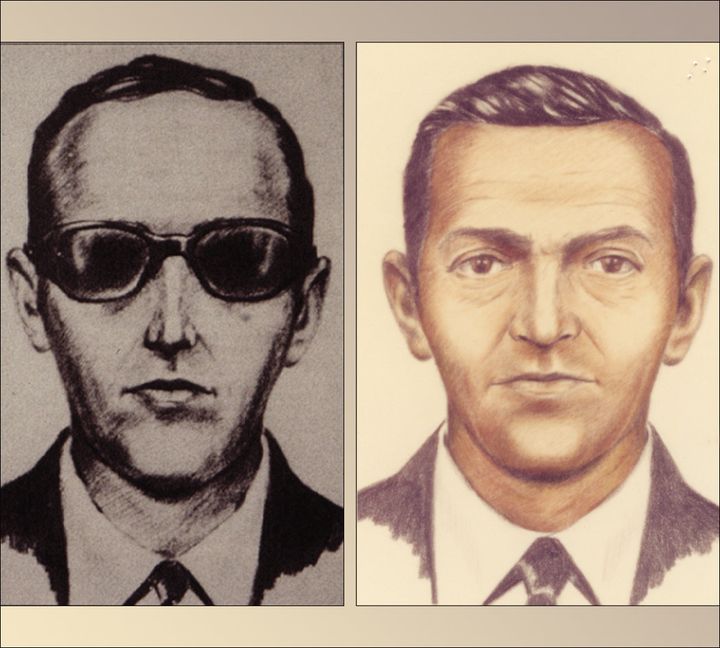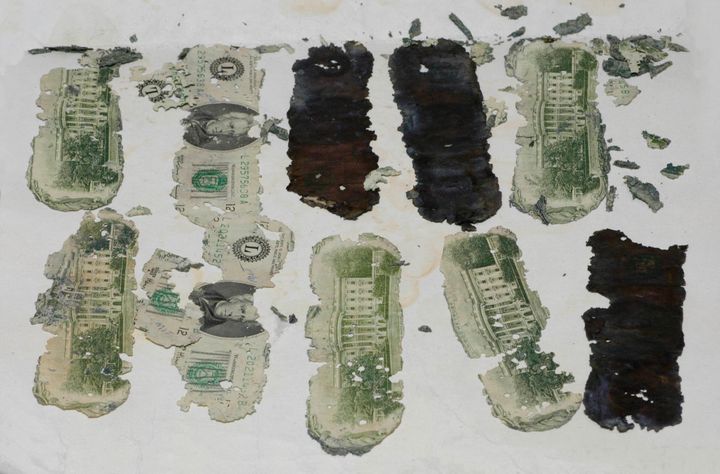It’s a case that has confounded the FBI for almost half a century, but a new clue in the DB Cooper skyjacker mystery may have emerged.
On 24 November 1971, a man vanished out the back of a Boeing 727 into a freezing rain, wearing a business suit, a parachute and a pack with $200,000 in cash.
He was never found, but a boy digging on a Columbia River beach in 1980 discovered three bundles of weathered $20 bills - nearly $6,000 in all. It was Cooper’s cash, according to the serial numbers.

Over the years, innumerable theories about Cooper’s identity and fate have been examined by both professionals and amateur sleuths, though last year the FBI formally announced it was closing the unsolved case.
Now a team of 40 volunteers, including 12 former FBI staff, have come forward with potential new evidence.
Film executive Thomas Colbert, who put together the group, told Fox News his investigators had discovered what “appears to be a decades-old parachute strap.”
Colbert refused to reveal exactly where the group had been focusing, but claimed the strap was found “right where a credible source claimed the chute and remaining money are buried.”

He says he will pass the potential evidence to the FBI, as well as reveal where the dig site is.
The news channel points out that shortly after the FBI closed the case in July 2016, Colbert filed a federal lawsuit in an aim to obtain its entire file on the DB Cooper case. Colbert confirmed the archived FBI field reports had helped corroborate evidence which led to the dig.
At the time, the FBI said it would preserve evidence from the case at its Washington DC headquarters, but wouldn’t act on further tips unless parachutes or money relating to the case were found.
On 24 November, 1971, the night before Thanksgiving, a man described as being in his mid-40s with dark sunglasses and an olive complexion boarded a flight from Portland, Oregon, to Seattle-Tacoma International Airport.
He bought his $20 ticket under the name “Dan Cooper,” but an early wire-service report misidentified him as “DB Cooper,” and the name stuck.
Sitting in the rear of the plane, he handed a note to a flight attendant after takeoff. “Miss, I have a bomb and would like you to sit by me,” it said.
The man demanded $200,000 in cash plus four parachutes.
He received them at Sea-Tac, where he released the 36 passengers and two of the flight attendants. The plane took off again at his direction, heading slowly to Reno, Nevada, at the low height of 10,000 feet. Somewhere, apparently over southwestern Washington, Cooper lowered the aircraft’s rear stairs and jumped.
Last year the History Channel aired a show suggesting a 72-year-old California man, Robert W Rackstraw, might have been Cooper – a theory Colbert continues to subscribe to according to his book about the case, co-written with Tom Szollosi.
Rackstraw, a Vietnam veteran who had parachute training, was questioned about the skyjacking in 1978, after authorities found explosives in a Stockton warehouse he leased. But he denied being Cooper, and the FBI said in 1979 he was no longer a suspect.
Rackstraw’s former lawyer, Dennis Roberts, of Oakland, said the documentary’s allegations about his client were false.
“He’s not DB Cooper, but nobody wants to listen,” Roberts said. “It’s the stupidest thing I’ve ever heard.”
In 2011, an Oklahoma woman told the FBI about a late uncle who showed up to Thanksgiving dinner in Oregon that year with serious injuries. A team that included a paleontologist from Seattle’s Burke Museum announced that particles of pure titanium found in the hijacker’s clip-on tie suggest he worked in the chemical industry or at a company that manufactured titanium.
A book that year, “Skyjack: The Hunt for DB Cooper,” by Geoffrey Gray, posited several theories, including that Cooper might have been a transgender mechanic from Washington state.
The most promising leads in recent years have come from amateurs, Gray said - including a notion put forth by a scientific illustrator at the University of Chicago that Cooper might have taken his persona from a French comic called “Dan Cooper,” a series about a test pilot in the Royal Canadian Air Force.
In one issue from 1963, the character boards an airliner wearing a dark suit and a mask over his eyes and sits in the back of the plane. He demands to be given a briefcase that’s in the cockpit, and then, wearing a military parachute, he jumps out - over a wooded area, at night, in the rain.
The comic was never translated into English, raising questions about whether the hijacker might have been a francophone.
“The fascination with Cooper has survived not because of the FBI investigation, but because he was able to do something that not only captured the public imagination, but also maintained a sense of mystery in the world,” Gray said.
